At Q Bank Gallery in Queenstown during The Unconformity Festival October 15-17 2021
We acknowledge, with deep respect the traditional owners of this land, the Palawa people.
The Palawa people belong to the oldest continuing culture in the world.
They cared and protected Country for thousands of years.
Islands have edges and these edges are marked by coastlines, by the regionality of spaces and by economic and social precarity. How do the contours of an island influence the contours of our minds? Portrait of an Interior uses different forms of photographic portraiture to explore what it means to inhabit Lutruwita/Tasmania. The works in this exhibition portray individual and collective stories that reverberate beyond their frames, speaking to the symbiotic relationship between people, place and the non-human world. In 1959, C. Wright Mills coined the term the ‘sociological imagination’ to describe the theory whereby, when something happens to an individual it is a symptom of what is happening in society. Portrait of an Interior shows personal stories of mutton birding, schizophrenia and the thylacine, which are just as much portraits of place as they are portraits of individuals. Each of the stories in Portrait of an Interior addresses the rich and complex conditions of contemporary life, creating a space in which we can deepen our understanding of the world and its edges.
Portrait of an Interior is a group show featuring works by Jess Boylan (VIC), Dave Carswell (TAS), Ellen Dahl (NSW), Lisa Garland (TAS), Matthew Newton (TAS), Sarah Rhodes (TAS) and Noah Thompson (TAS). Many of the artists are undertaking a residency at Q Bank Gallery in the lead-up to The Unconformity and will be in the gallery to discuss their work during the festival.
Contact info@qbankgallery.com.au for sales enquiries or visit the gallery during 15-17 Oct. Artist talk at 4pm Saturday 16 October.
Friday 15 October 2021
4pm–7pm
Saturday 16 October 2021
12pm–6pm. Artist talk at 5pm.
Sunday 17 October 2021
12pm–2pm
Ellen Dahl
Field Notes from the Edge
2020
Originally from Arctic Norway and of Sámi descent, I have ongoing interests in ‘places at the edge of the world’ and probing photography’s entanglement with the concept of the landscape as a cultural construct and geological imagination. Field Notes from the Edge is a long-term research project exploring the north/south peripheral sites of the arctic island of Spitsbergen (Svalbard/Norway) and Tasmania. These sites are renowned for their pristine nature and projection of deep time, while the stain of human activity is concurrently visible across the geographical topography. The works presented here are images from Tasmania, some stained by arctic coal – hinting at multiple geographies, shared histories and politics. I am a current PhD candidate within the School of Creative Arts and Media, at the University of Tasmania.
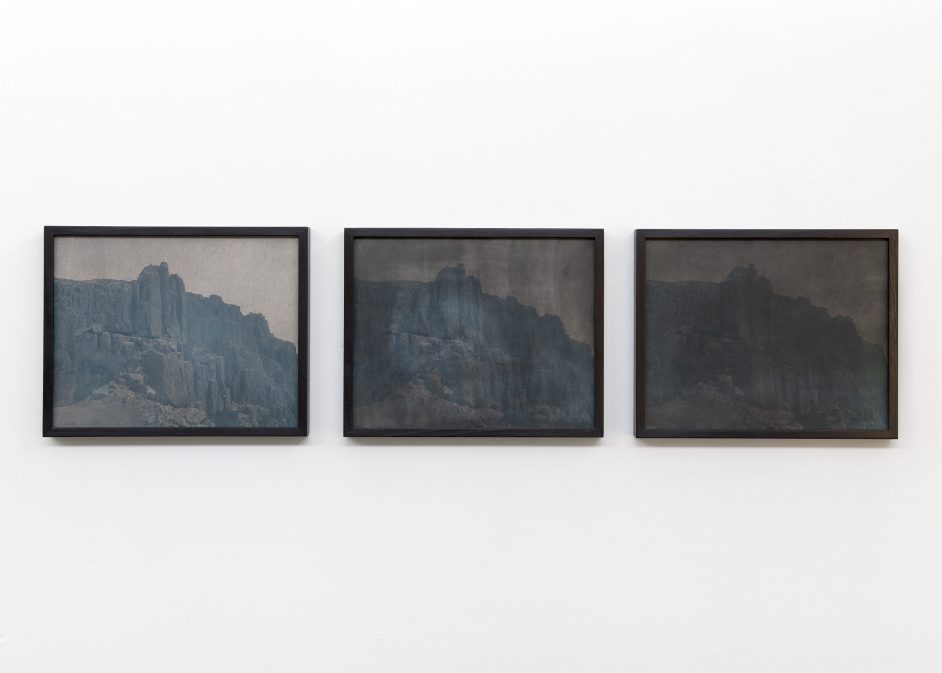
Field Notes from the Edge #9+#10+#11+12 / 41°30’49.1″S
2020
Cyanotype on cotton gelatin paper. Arctic coal.
Custom made oak frame.
28cm x 36cm, edition of 1
$750
Dave Carswell
Grant Me the Serenity
2020 — present
Since returning to my home state of lutruwita/Tasmania at the start of the global pandemic, I have faced a reckoning of sorts in considering my childhood and departure from the island 20 years ago. The early and unexpected nature of the migration forced an examination of familial memories and a questioning of the material and immaterial nature of place. This work stems from an interest in interrogating the intersection of the human condition with the land and examining the impacts of anthropological forces on the corporeal setting. Conversely, the work attempts
to reveal the influences the physical expanse has on the seclusion of the human condition. It could be argued that the natural and forced tension in the landscape plays out against the collective psyche of the State’s inhabitants.
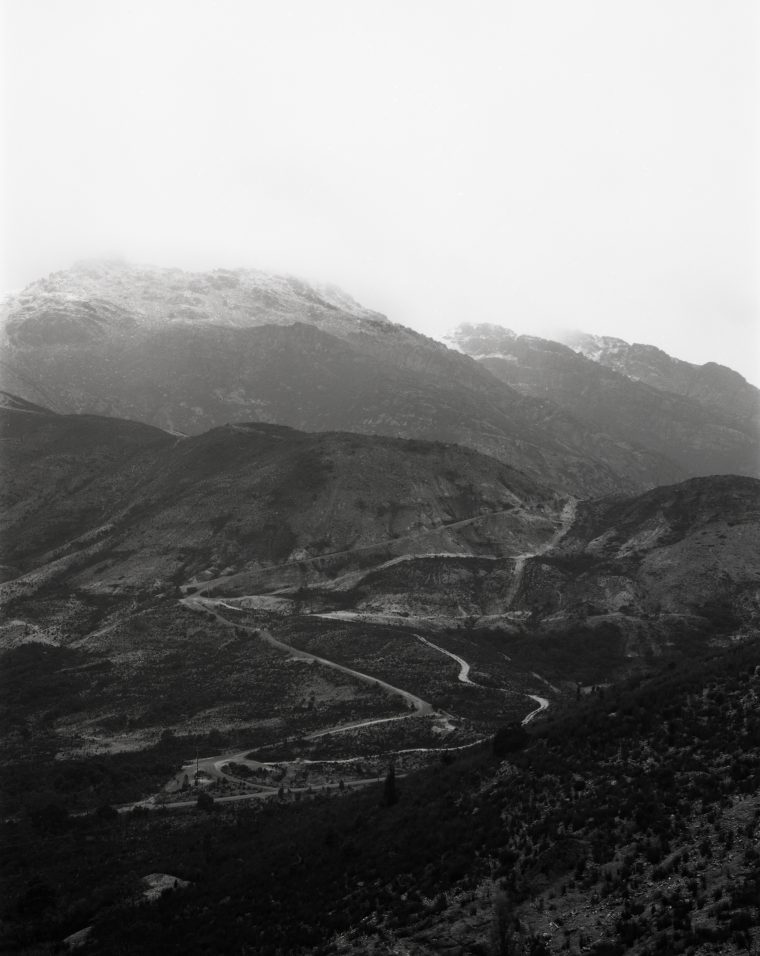
Gormy Hill
2020
Pigment print on platine fibre rag
50cm x 62cm, edition of 5
$400
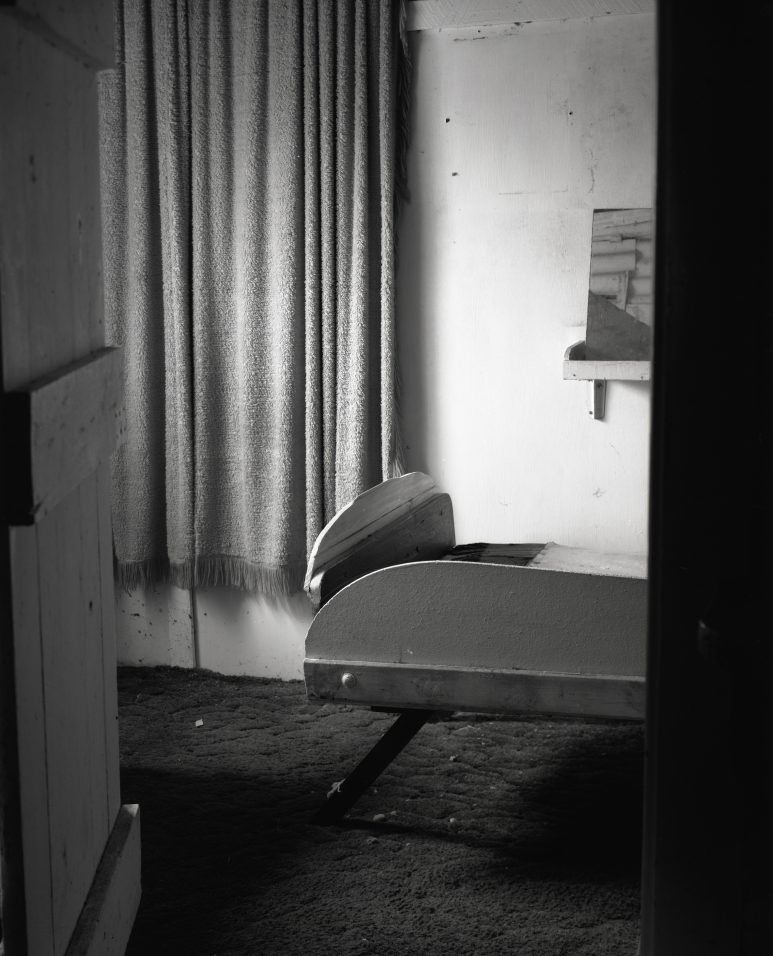
Leo Kelly’s Bedroom
2020
Pigment print on platine fibre rag
50cm x 62cm, edition of 5
$400
Sarah Rhodes
A Surrounded Beauty
2018 — present
A Surrounded Beauty is a photographic exploration of the emotional relationship between people and place, asserting that the environment is an integral part of who we are and that place and personhood are interconnected. The works in this exhibition explore identity, solitude, precarity, atmosphere and attunement. Italian philosopher Tonino
Griffero (2019) defines ‘attunement as our ability to be affected by our surroundings and affect them in turn.’ I gravitate towards introverted subjects deeply connected to place and firm in their sense of identity. Through their
experiences of solitude, I find them emanating a heightened sense of self as though woven into the fabric of the world they inhabit. The body of work is set in lutruwita/Tasmania, raising questions about whether growing up on a geographical island amplifies connections with a place. The photographs examine whether the landscape pictured mirrors the subjects’ affective experience. I am a current PhD candidate within the School of Creative Arts and Media, at the University of Tasmania Inveresk.
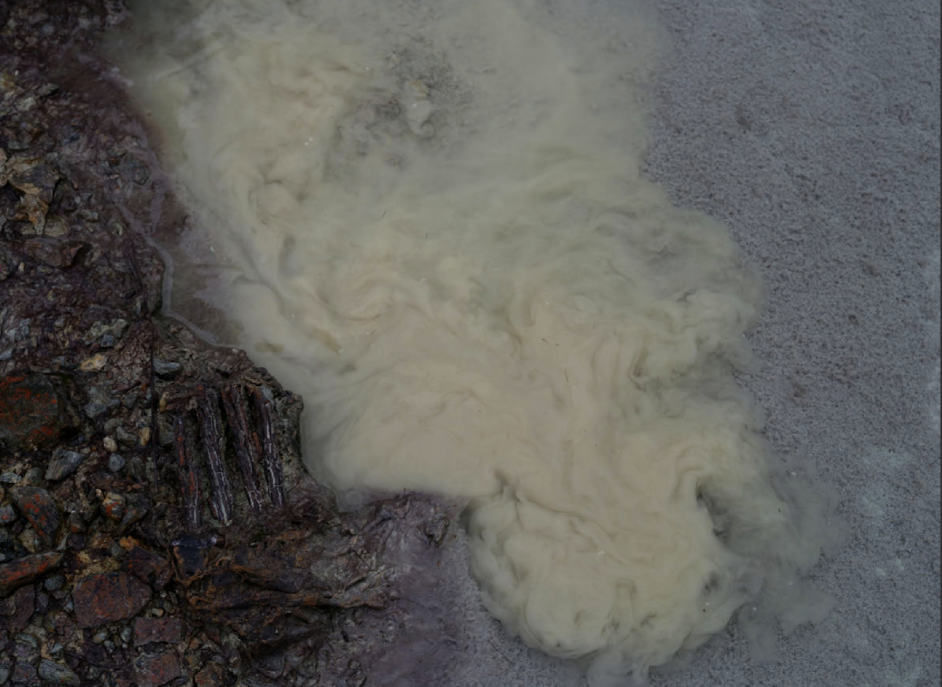
Dreaming Pool
2021
Pigment print
55cm x 77cm, edition of 7
POA
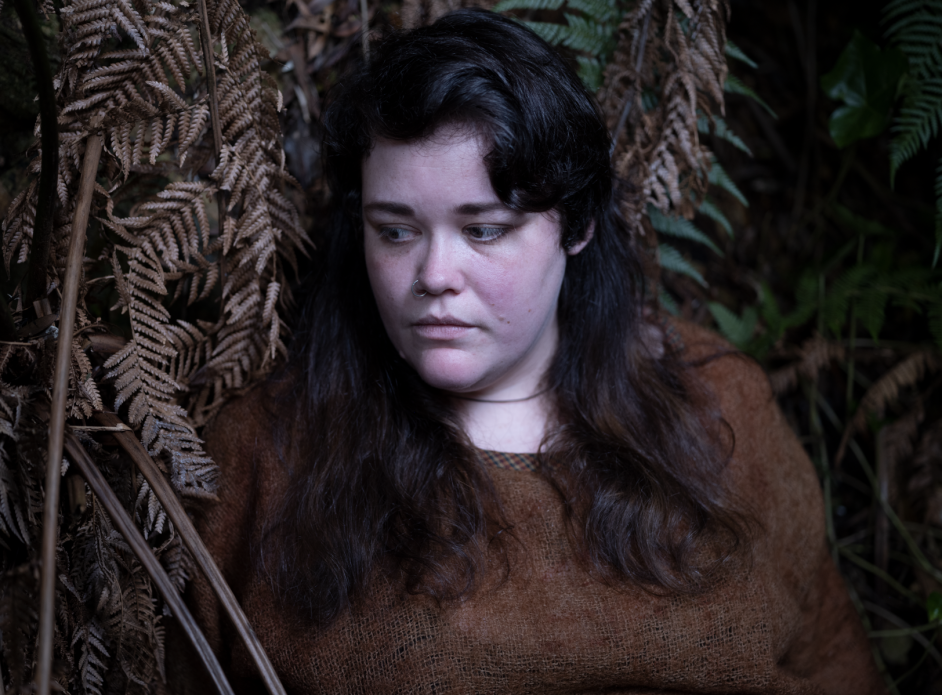
I felt so deeply held by this garden that I’ve neglected
2021
Pigment print
55cm x 77cm, edition of 7
POA
Noah Thompson
Huon
2018 — 2021
Huon (2018 – 2021) is inspired by the conflict between conservation and development in lutruwita / Tasmania and the tensions that continue to avail the community. Reoccurring over the past century and intensifying from the 1970s; the opposition and support of hydroelectric dams, mining operations and the logging of old-growth forests have shaped the island state’s politics, social life and landscape. It is a place where the schism of environmental concern and industrial venture has seen violence, industrial sabotage, threats, vandalism, corruption, conspiracy theories and dissension. Coming from a background in political science and with an interest in visual narratives, my work examines the ways in which individual and community circumstance play out amongst broader social, political and cultural events. With an emphasis on slowness through the use of large-format film cameras, I attempt to delve into the cultural and social subtleties of contemporary Australia while informed by the past.
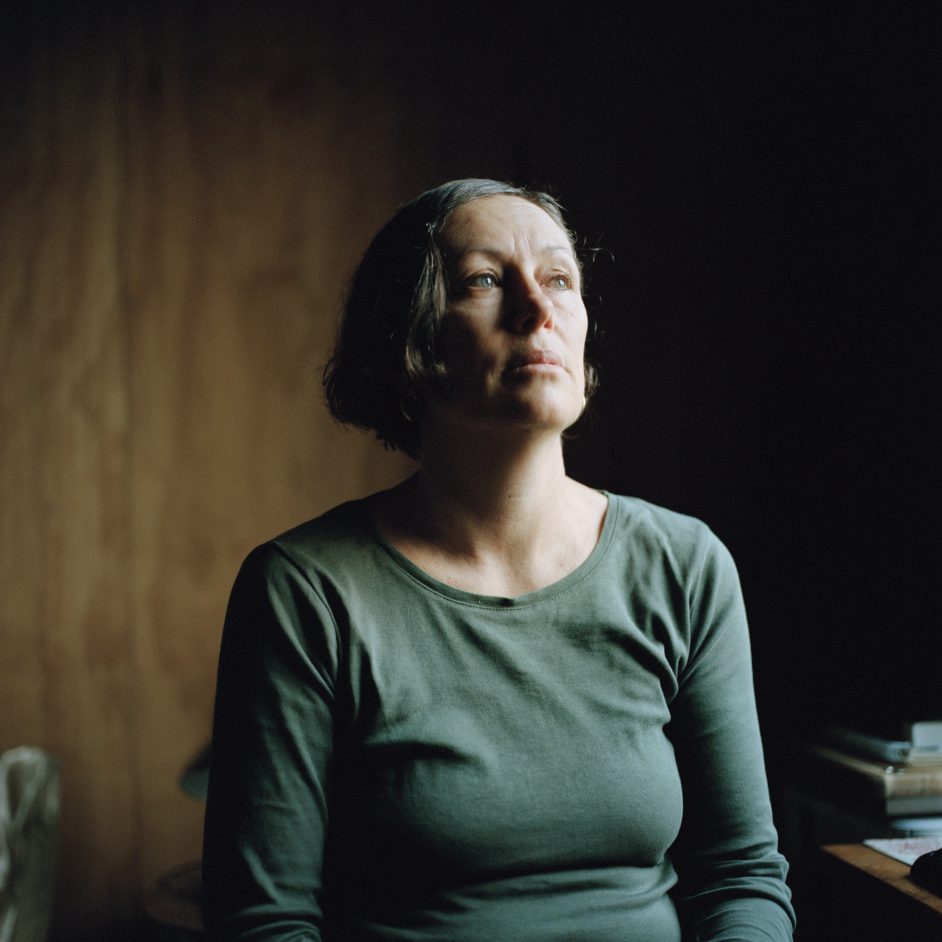
Susan
2018
Pigment print
40cm x 40cm, edition of 4
$600 framed
$300 unframed
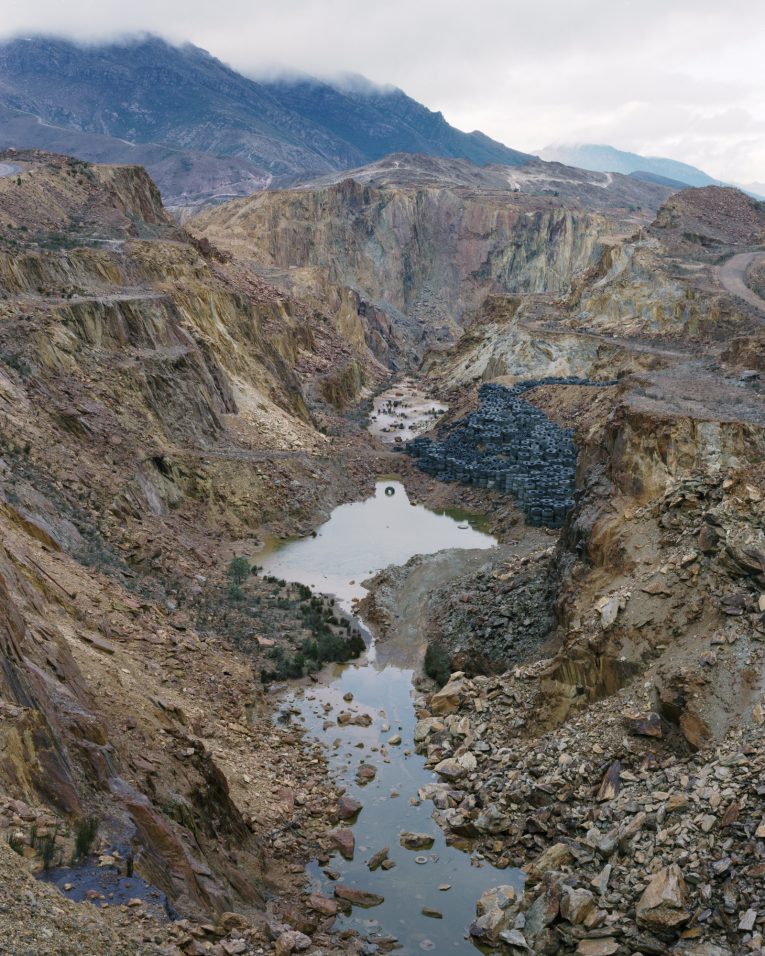
Mt Lyell
2020
Pigment print
120cm x96cm, edition of 5
$3200 framed
$2200 unframed
Jess Boylan
The Smallest Measure
2021
Slow emergencies are forms of harm and damage that are not acute but occur gradually and imperceptibly to most of us — like climate change, environmental pollution and radiation. Yet despite remaining largely unseen over time, the effects of slow emergencies are palpable, their relative invisibility rendering the harm they wreak, all the more entrenched and difficult to address. The Smallest Measure explores Kennaook/Cape Grim in lutruwita/Tasmania, a historical Aboriginal massacre site and the location of an air pollution monitoring station and science program, jointly
managed by BoM and CSIRO. Untouched by land, the wind that arrives at Cape Grim after blowing over the Southern Ocean is one of the cleanest in the world and is considered ‘baseline’ air: that is, it represents the background atmosphere and thus grants insights into the driving forces behind anthropogenic climate change. As a photography, video and sound artist based on Dja Dja Wurrung country in Central Victoria, I am interested in the role art plays in environmental and social justice issues and like to work in collaboration with others to make sense of our times. I
am a member of Lumina Collective, the Atomic Photographers Guild and current PhD candidate within the School of Art at RMIT.

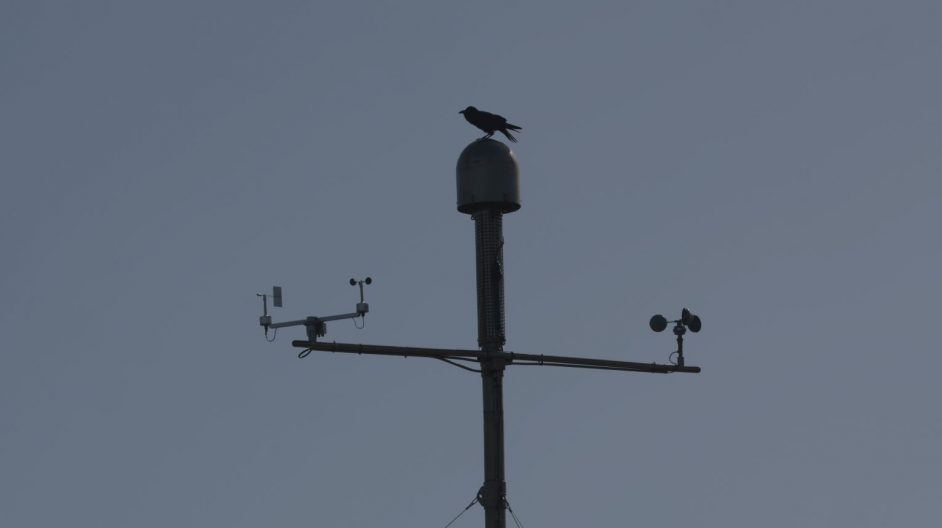
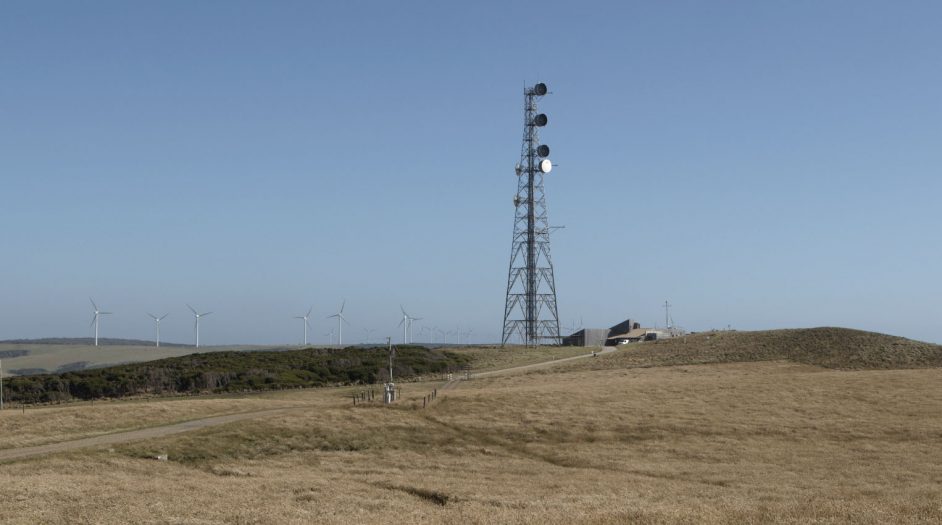 Jessie Boylan
Jessie BoylanThe Smallest Measure
2021
23mins, single-channel video loop.
Sound design by Jessie Boylan, Linda Dement & Genevieve Fry
POA
Lisa Garland
Distil
2019 — present
“A man, after he has brushed off the dust and chips of his life, will have only
the hard, clean questions: Was it good or was it evil? Have I done well – or ill?”
— John Steinbeck, East of Eden (1952)
Coming from a lineage of fishmongers on the North West and West Coast of lutruwita/Tasmania, I have always lived twenty metres from the ocean. I make large scale, silver-gelatin portraits of the people who are part of my world
and their private spaces, made public through the act of photographing. There is a beauty and excitement that comes with the find. Listening to the pounding of the ocean resonates with me and my subjects. The weather dictates these island lives. A storm represents a time to sit, reflect and create in these remote spaces. There are no rules. It might take on the form of making a tiger skin outfit, the scribbling of random text as a response to reading Steinbeck or a crazy walk into a wild landscape.
This is Garland’s life.
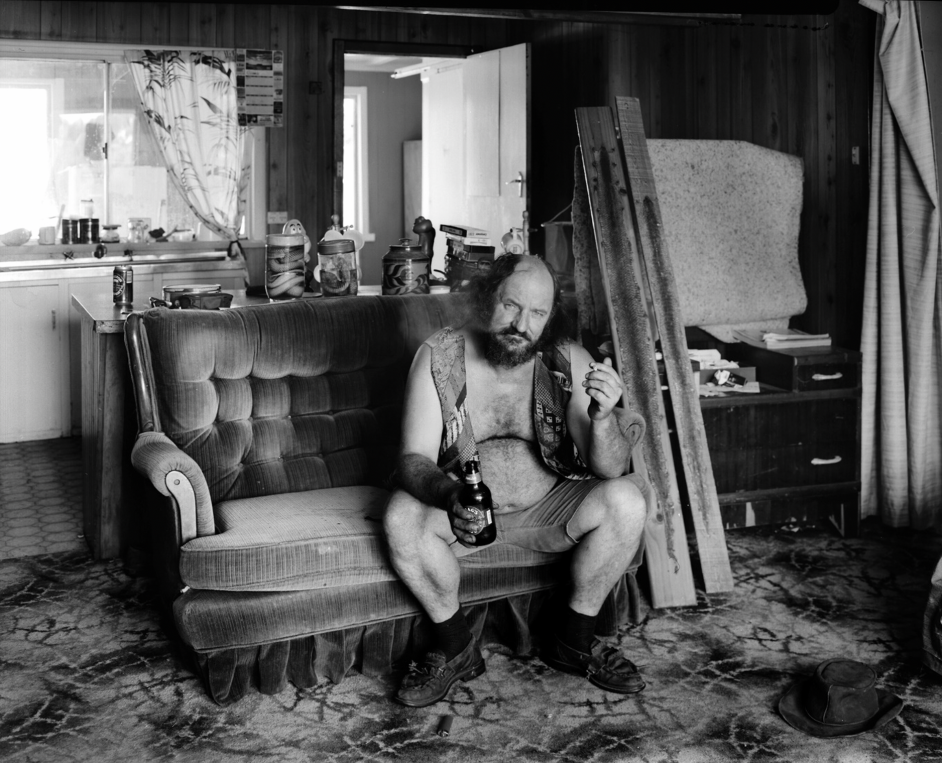
Roger
Silver gelatin print
100cm x 110 cm
POA
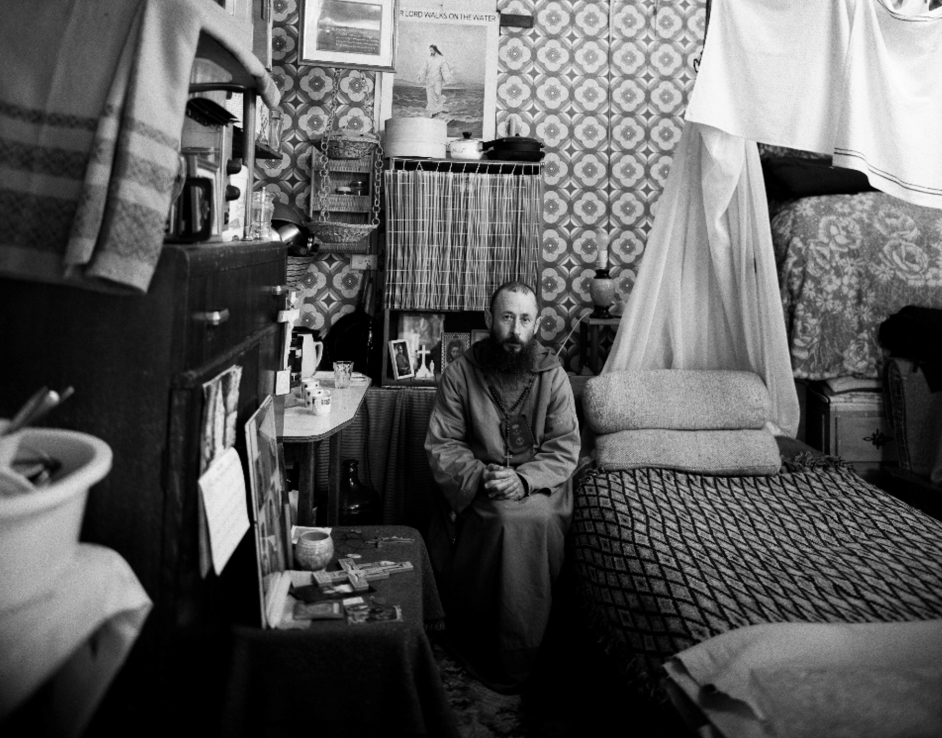
Kim
Silver gelatin print
100cm x 110 cm
POA
Matthew Newton
Moonbird Boy
2009
In the 1970s a young a young Palawa man, Errol West, wrote a beautiful poem, The Moon Birds of Big Dog Island:
Like dust blown across the plain
are the people of the Moon Bird.
And yet there is no one to teach
me the songs.
That bring the Moon Bird, the fish
Or any other thing that makes
me what I am.
Storytelling is the most powerful way to put ideas into the world today. Stories are what move us, make us feel alive, and inspire us. Ultimately, as a documentary photographer, I want my work to be a part of the conversation in geopolitics, social issues, and the environment. To engage with the world on a deeply serious level. The price of admission to this amazing life is that you have to go all the way out there, come back and show the world what you saw. If you take that responsibility seriously it’s a difficult task. I am a director/ cinematographer and documentary photographer based in Hobart and head up Rummin Productions.
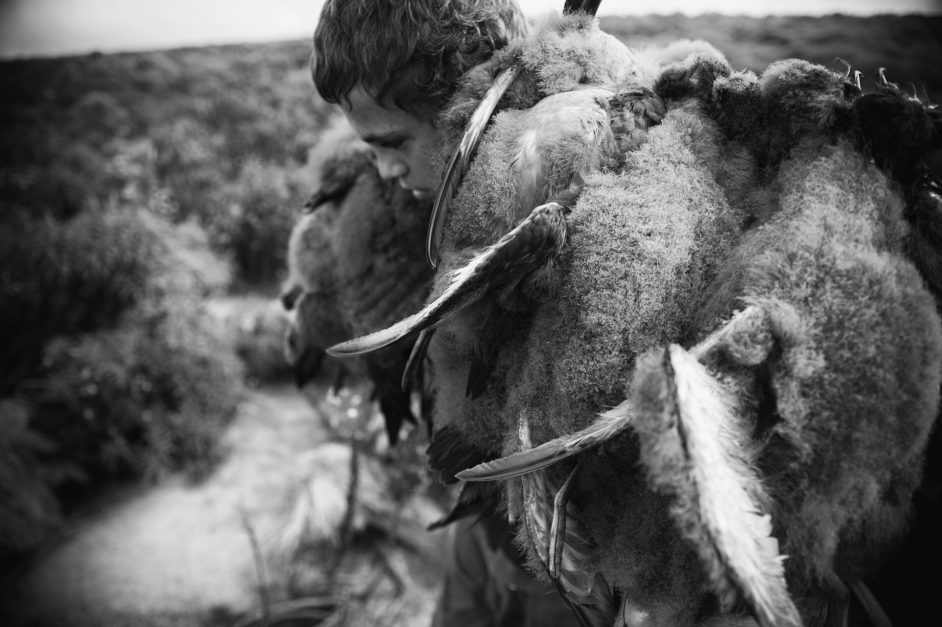
Moonbird boy
2009
Pigment print
100cm x 65cm
$3000 framed


Leave a Reply